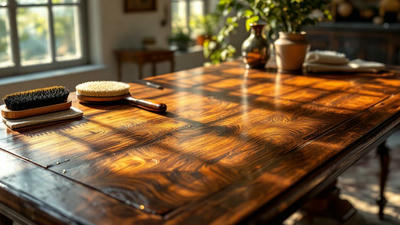5 Dusting Hacks to Keep Your Home Sparkling Clean
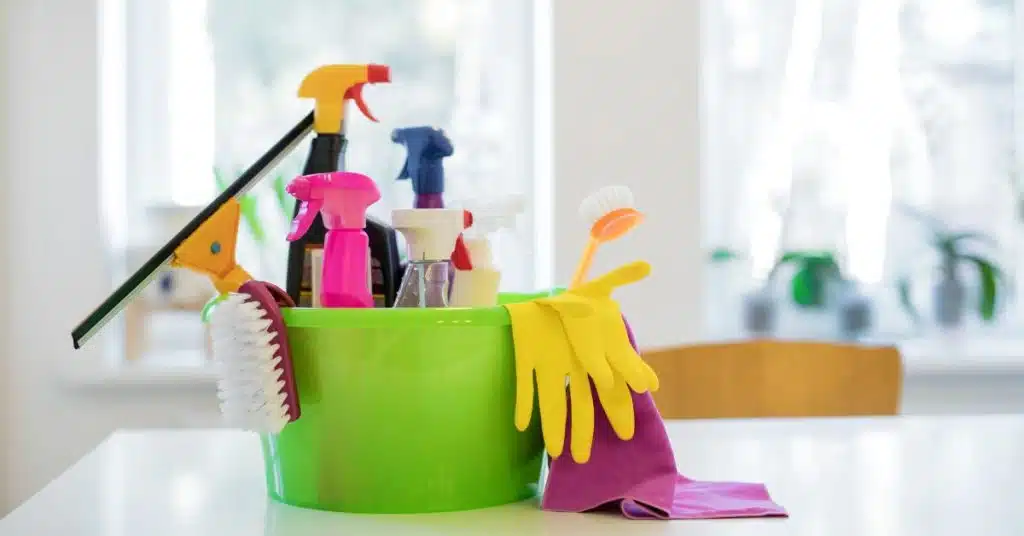
Maintaining a clean, dust-free home can feel like an endless battle. Dust accumulates in every corner, and it seems that no matter how frequently you clean, it eventually returns. While it may appear daunting, keeping your home sparkling clean is entirely achievable with the right techniques and tools.
Understanding Dust
Before diving into the dusting hacks, it is essential to understand what dust is and why it accumulates. Dust is composed of tiny particles that come from various sources, including dirt, pollen, skin cells, hair, textile fibers, and even tiny insect parts. These particles can easily become airborne and settle on surfaces throughout your home.
The Impact of Dust on Health
Dust can significantly affect indoor air quality and is a common allergen. Regular exposure to dust can exacerbate allergy symptoms, trigger asthma attacks, and contribute to respiratory issues. For individuals with preexisting conditions, a dusty environment can make symptoms worse, leading to discomfort and even health complications. Therefore, keeping dust levels in check is not only about maintaining a clean appearance but also about ensuring a healthy living space.
Why Dust Accumulates
Dust accumulates for various reasons. Common factors include:
- Open Windows and Doors: Dust enters your home through open windows and doors, especially on windy days.
- Pets: Pet dander and hair are significant contributors to dust accumulation.
- Human Activity: Our daily movements stir up particles that may have settled on surfaces.
- Upholstery and Carpets: Fabrics can trap dust and release it back into the air when disturbed.
- Lack of Regular Cleaning: Infrequent cleaning allows dust to settle and accumulate over time.
Understanding these factors can help you be proactive in managing dust in your home.
Hack 1: Utilizing Microfiber Cloths
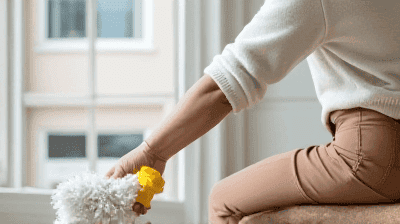
One of the most effective tools for dusting is the microfiber cloth. Unlike traditional dust cloths, which may just push dust around, microfiber cloths are designed to trap and hold onto dust particles.
1.1 Choosing the Right Microfiber Cloth
When selecting microfiber cloths for dusting, look for those that are labeled specifically for cleaning. These cloths often have a thicker texture and more fibers, enhancing their dust-trapping ability. Consider investing in a few different colors, so you can designate specific cloths for different cleaning tasks—this can help prevent cross-contamination.
1.2 Dry vs. Damp Dusting
Microfiber cloths can be used for both dry and damp dusting. For most surfaces, a dry cloth is sufficient. However, for sticky or greasy areas, you can lightly dampen the cloth with water or a mild cleaning solution. Here’s how to utilize both methods effectively:
Dry Dusting: Simply use the dry microfiber cloth to wipe surfaces. Its fibers will attract and hold dust, making it an efficient choice for quick clean-ups.
Damp Dusting: For areas with built-up grime, spray a light mist of water or a solution of equal parts vinegar and water onto the cloth. This helps to lift any sticky residue while still trapping dust.
1.3 Proper Dusting Techniques
To maximize the effectiveness of your dusting:
- Start High and Move Down: Always dust from the top of the room (such as ceiling fans or light fixtures) and work your way down to lower surfaces. This prevents dust from falling onto areas you’ve already cleaned.
- Use Circular Motions: Instead of wiping back and forth, use circular motions to grab and trap dust more effectively.
- Rinse Regularly: If using a damp cloth, make sure to rinse and wring it out frequently to avoid spreading dust and dirt around.
With these tips, you can harness the power of microfiber to keep dust at bay.
Hack 2: Vacuuming Smartly
While most people associate vacuuming with carpet cleaning, your vacuum can play a significant role in dust removal throughout your home. It can tackle dust in hard-to-reach places and help keep surfaces clean.
2.1 Don’t Forget Attachments
Most vacuum cleaners come with various attachments designed for different cleaning tasks. Using these attachments can enhance your dusting efficiency. Some common attachments include:
- Dusting Brush: This brush attachment is perfect for cleaning delicate surfaces like picture frames, baseboards, and blinds.
- Crevice Tool: Ideal for reaching tight spaces and corners where dust tends to accumulate.
- Upholstery Tool: Perfect for cleaning sofas, chairs, and other soft furnishings where dust and pet hair may cling.
2.2 Vacuuming Technique
To effectively vacuum dust, consider the following techniques:
- Start High: Similar to dusting, begin vacuuming at the highest points in the room. This includes ceiling fans and light fixtures. This ensures that dust falls to lower surfaces for collection later.
- Work Methodically: Move methodically through the room, ensuring that you cover every inch of the floor and any upholstered surfaces.
- Attach a HEPA Filter: If your vacuum cleaner doesn’t already have one, consider adding a HEPA filter. These filters are designed to trap tiny particles, improving the air quality in your home.
2.3 Frequency is Key
Regular vacuuming should be part of your cleaning routine. Consider vacuuming at least once a week to keep dust and allergens at bay. For homes with pets, you may need to vacuum more frequently to manage hair and dander.
Hack 3: Create Your Own Dusting Solutions
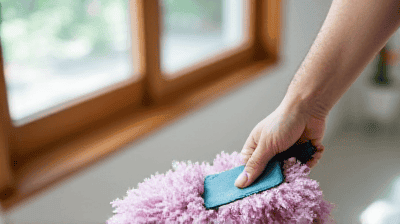
Using homemade dusting solutions can significantly enhance your cleaning effectiveness. Not only are these solutions often more affordable than store-bought options, but they can also be made with natural ingredients, making them safer for your family and pets.
3.1 Vinegar and Water Solution
One effective DIY dusting solution is a mixture of white vinegar and water. This solution is not only effective for cleaning but also helps to cut through built-up grime and reduces odors.
- Mixing Instructions: Combine equal parts of white vinegar and water in a spray bottle.
- Applying: Lightly mist a microfiber cloth with this solution and then use it to wipe surfaces. Avoid soaking surfaces, which could damage certain materials.
3.2 Essential Oils for a Fresh Scent
Adding essential oils to your dusting solution can provide a pleasant aroma while cleaning. Some popular choices include:
- Lavender: Promotes relaxation and has natural antibacterial properties.
- Lemon: Has a fresh scent and acts as a natural disinfectant.
- Eucalyptus: Has a refreshing scent and can help clear the air.
To use essential oils, add a few drops to your vinegar and water solution. This will not only leave your home smelling wonderful but also enhance the cleaning properties of your solution.
3.3 Alternative Commercial Products
If DIY cleaning solutions are not your preference, many commercially available dusting sprays are effective. Look for products that are environmentally friendly and free of harsh chemicals. Check labels to ensure they are safe for the surfaces you will be cleaning.
Hack 4: Decluttering for Effective Dusting
One of the most effective strategies for keeping dust to a minimum is to declutter your home. Reducing clutter not only improves the overall appearance of your space but also lessens the number of surfaces where dust can settle.
4.1 The Importance of Regular Decluttering
Set aside time regularly to go through your belongings. A monthly decluttering session can keep your home organized and reduce dust accumulation. Here are some tips:
- Sort and Purge: Identify items that you no longer need or use. Create three categories: keep, donate, and discard. If an item hasn’t been used in the past year, it’s likely time to let it go.
- Use Storage Solutions: Invest in storage containers, bins, and baskets to keep items organized. Labeling storage can also help you find things easily without creating clutter.
4.2 Zone Cleaning Approach
To make decluttering manageable, you can approach it by zones. Focus on one room or area at a time, breaking the task down into smaller parts to avoid feeling overwhelmed.
- Living Room Organization: Begin with surfaces like coffee tables, entertainment centers, and bookshelves. Remove items that don’t belong and tidy up.
- Bedroom Declutter: Focus on your nightstands, dresser tops, and under the bed. Regularly check for items that may have accumulated that can be removed.
4.3 Identify Clutter Hotspots
Pay attention to areas in your home that tend to accumulate clutter more quickly than others. By addressing these hotspots regularly, you can stay ahead of dust and prevent major clean-up efforts.
Hack 5: Establishing a Consistent Cleaning Routine
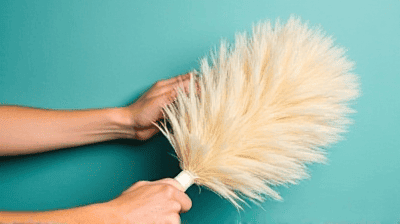
A well-structured cleaning routine can make managing dust much easier. By establishing habits that incorporate dusting and cleaning into your daily life, you can maintain a spotless home with less effort.
5.1 Daily Tasks for Dust Control
Incorporating small daily cleaning tasks can significantly reduce dust accumulation:
- Wipe Down Surfaces: Quickly wipe down kitchen counters, coffee tables, and other frequently used surfaces to prevent dust buildup.
- Manage Pet Hair: If you have pets, make it a daily task to groom them. Regularly brushing your pets can significantly reduce the amount of hair and dander in your home.
5.2 Weekly Cleaning Schedule
Set aside a specific day each week dedicated to cleaning tasks that require more time and effort. Your weekly cleaning schedule might include:
- Dusting High Surfaces: Don’t forget ceiling fans, light fixtures, and shelves.
- Vacuuming and Mopping: Ensure you vacuum carpets and hard floors, moving furniture if necessary to reach hidden areas.
5.3 Seasonal Deep Cleaning
In addition to daily and weekly cleaning, consider planning for deep cleaning sessions at least once a season. Deep cleaning allows you to focus on areas that often get neglected, like behind appliances and inside closets. During these sessions, tackle:
- Baseboards and Trim: Dust built-up dirt from baseboards and architectural details to enhance the overall look of your home.
- Behind and Under Furniture: Move heavy furniture periodically to clean underneath and behind. Dust tends to accumulate in these hidden areas.
Conclusion
Keeping your home sparkling clean and free of dust is achievable with the right tools, techniques, and a bit of consistency. By implementing these five dusting hacks—using microfiber cloths, vacuuming effectively, creating DIY dusting solutions, decluttering regularly, and establishing a cleaning routine—you can significantly reduce dust accumulation in your home.
Regular dusting not only improves the appearance of your living space but also enhances air quality and overall health. Take pride in your home by adopting these practices, and enjoy the benefits of a cleaner, healthier environment for you and your family.
Now that you have the tools and strategies needed to keep your home spotless, it’s time to put them into action. Happy cleaning!

